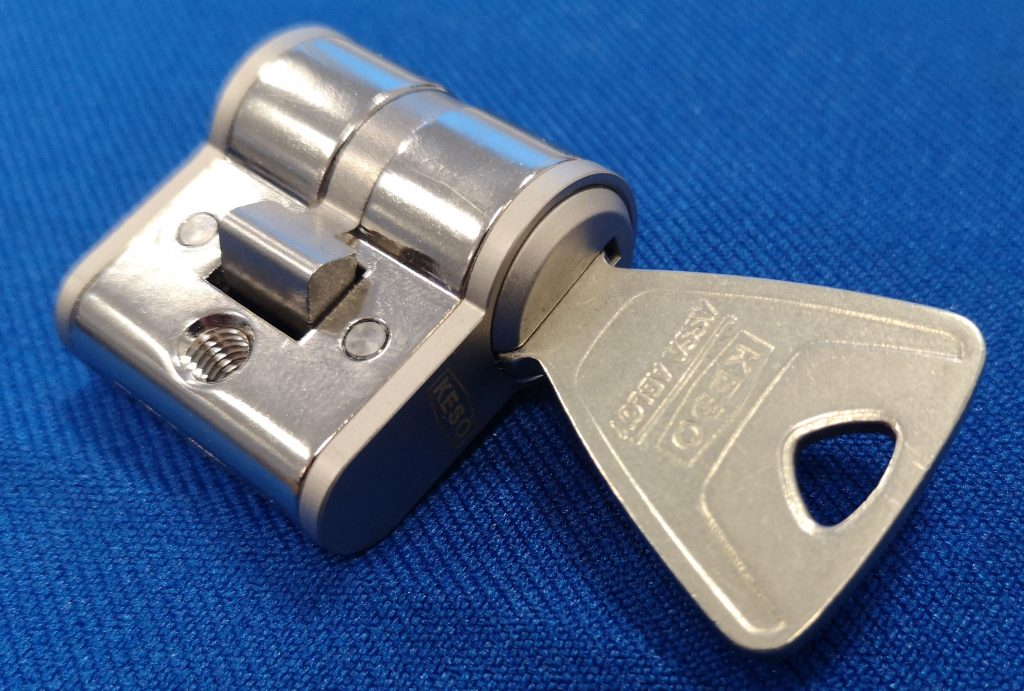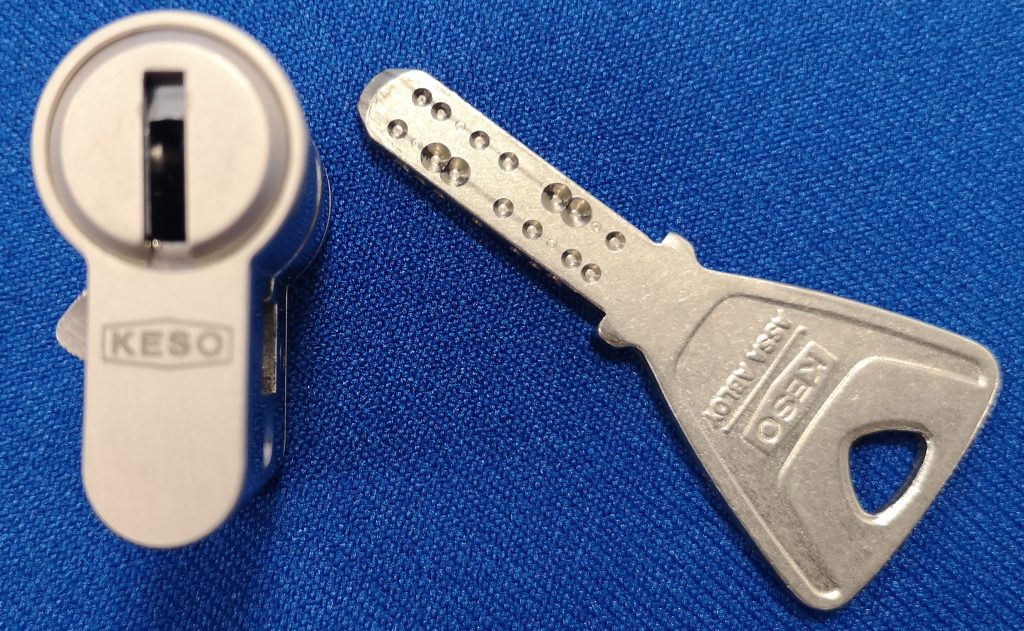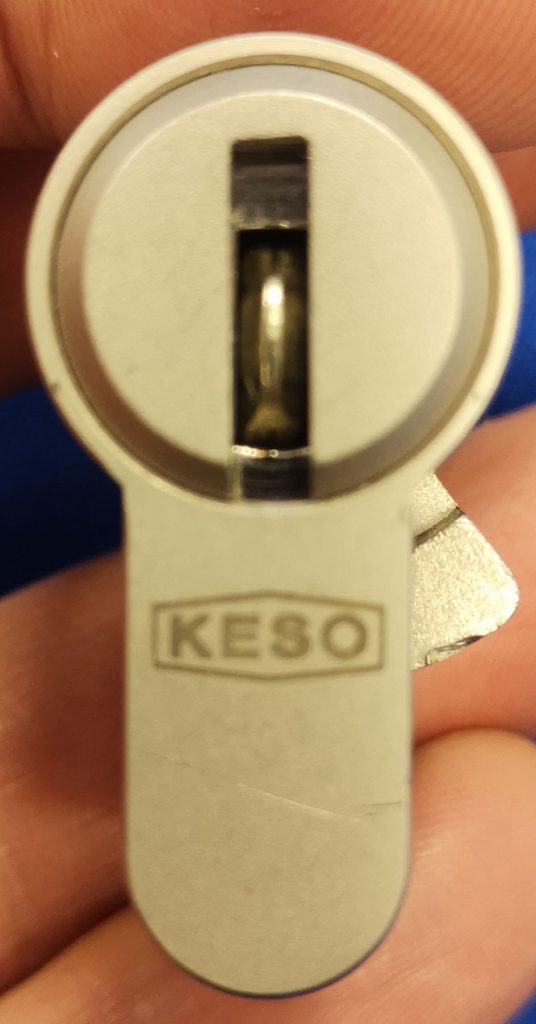This weekend at the Wendt lockpicking event, I spoke with the gentle people from BESA specialty lock shop in Belgium. They brought with them a very intriguing cylinder. It’s a KESO Octro 4000S dimple cylinder, but what makes it special is its size: it is a 14/14 cylinder (total size 2.8 centimeters).

The key is a normal sized key. It goes all the way through the cylinder. That means that the bitting interacts with pins on both sides of the key, which in turn means that the key must be symmetric.

Indeed it is. When the key is inserted, you can see it while looking at the other side.

By looking at the key, there could be as many as 30 pins in there. Not bad for a 14/14 cylinder, especially when you compare it to the 20/20 cylinder that had just one pin I wrote about earlier (see https://blackbag.toool.nl/?p=3882)!
If you have one of these to spare or know where to get them, let me know.
Walter.

I knew someone would do an ultra short cylinder eventually!
Indeed. It’s cool to see even smaller cylinders. Fitting the 20-ish pins is the small space is quite the achievement.
Judging from these pictures, I expect this lock to have 12 pins. So not 20 or 30-ish. Still very impressive in such a small lock (I suspect/guess that a regular Keso lock of this type will have 3 rows of 5 pins, so 15 total, which is not that much more). And the pins in this lock seem to have a normal, decent size diameter (2nd picture, where 1st pin is visible), so Keso made no concessions here.
How I got to the 12 pins? I don’t expect there will be pins where the cam is (so the dimples in halfway the key would have no function other than make the key look more normal). Before and after this center part, there appear to be 4 positions each. In the 2nd picture, it looks like there are also dimples on the top of the key, I assume also 4 (real) cuts/positions on each side of the cam. I expect 3 rows of pins in the lock (left, top, right), with 8 positions each. So 24 total. But only half of them are unique, the others are mirrored, since they key must be symmetric. Given the diameter of the pins, I don’t believe 4 pins fit at one side, I expect an empty spot in between. So each row will have only 4 pins, 2 at each side of the cam. So 3 rows times four pins = 12 pins.